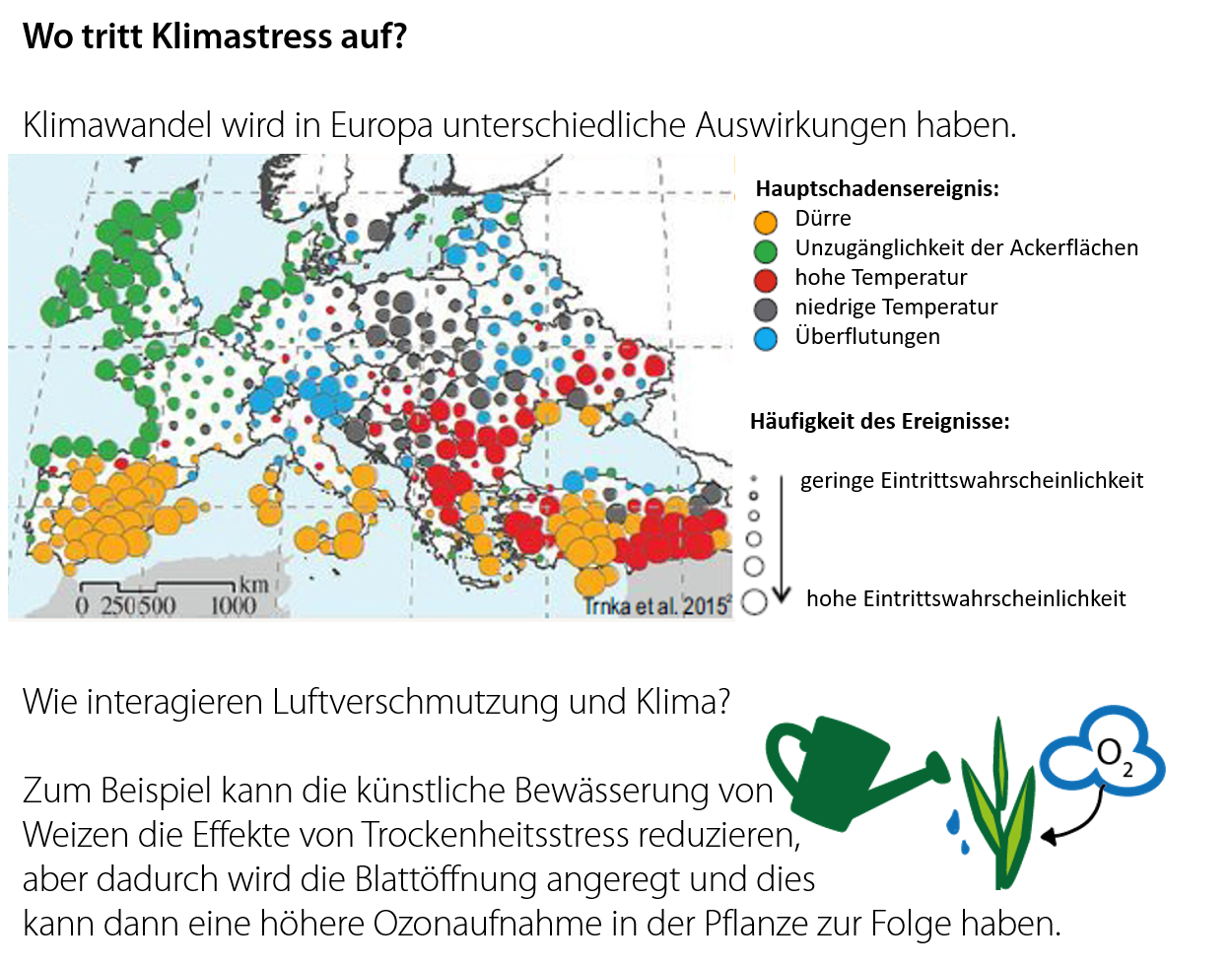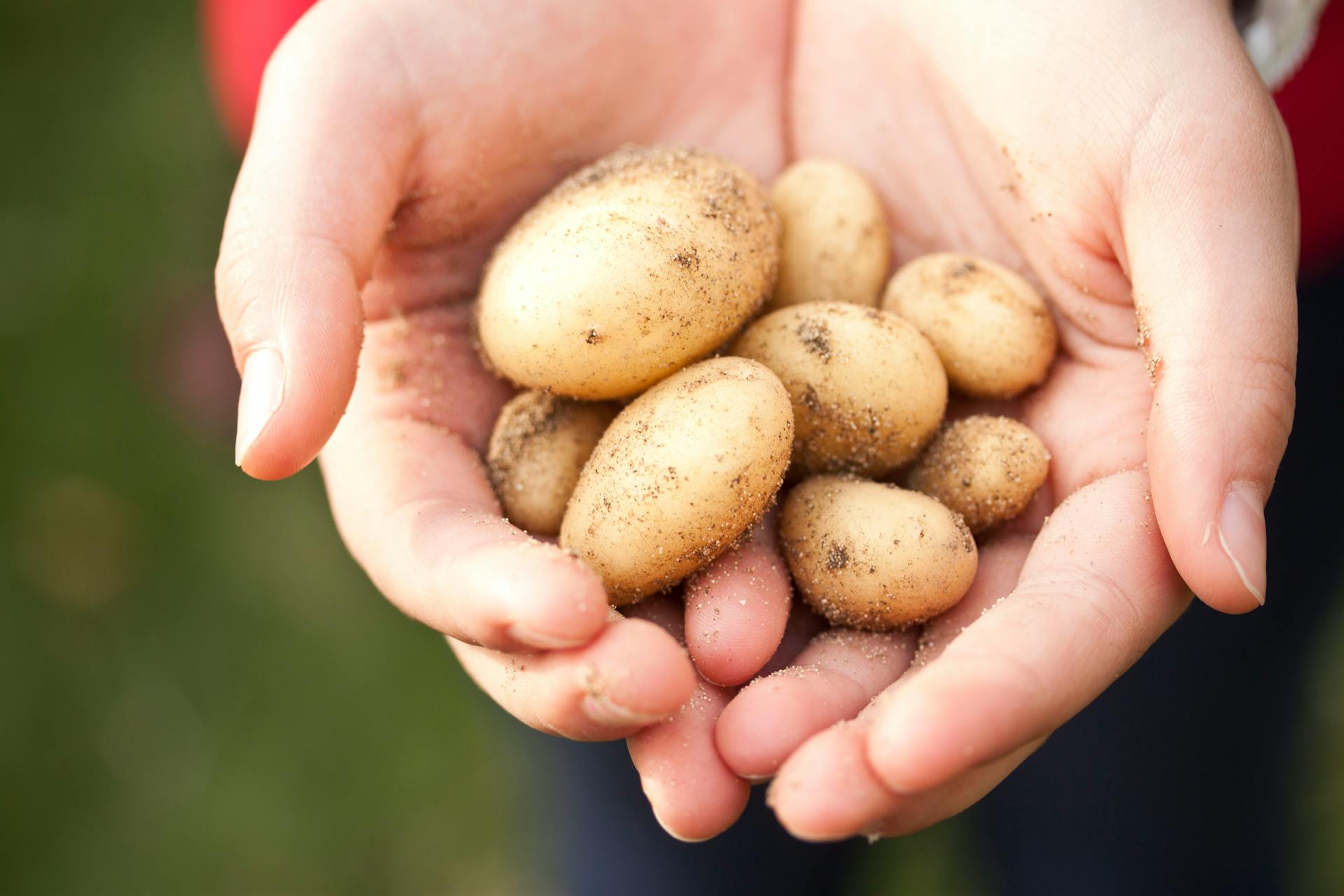01.03.2019 – 31.12.2022
University Bonn
SUSCAP is funded by SusCrop (ERA-Net, Cofund on Sustainable Crop Production), an ERA-Net Cofund Action under H2020
Anita Beblek
anita.beblek[at]agrathaer.de
Stockholm Environment Institute (SEI), York
Centre for International Climate and Environmental Research (CICERO), Norwegen
JRC, Directorate Sustainable Resources, Unit D.5 (Food Security)
Universität Bonn, Institut für Nutzpflanzenwissenschaften und Ressourcenschutz (INRES)
Consiglio per la ricerca in agricoltura e l’analisi dell’economia agraria (CREA), Italien
Academia Fortelor Aeriene ‚Henri Coandã‘ (AFAHC), Rumänien
National Meteorological Administration Climatology, Rumänien
Centro de Investigaciones Energéticas, Medioambientales y Tecnológicas (CIEMAT, Environmental Department), Spanien
Aims of the SUSCAP project
The SUSCAP project aims to gain a better understanding of how air pollutants and climate change affect wheat production across Europe. The project will define and map multiple stressors and, through collaboration with farmers and other stakeholders, identify viable mitigation options to best address the dual threat of air pollution and climate change. Further information can be found at >>https://suscap.wordpress.com/
The SUSCAP project objectives:
- Identify which multi-stress combinations (e.g. pollution (aerosol and ozone), drought, high temperatures, low soil fertility) are most likely to adversely affect the efficiency of crop resource utilization and ultimately crop growth, development and yield.
Describe the frequency, magnitude and geographic distribution of the most damaging of the aforementioned multi-stress combinations and the geographic locations where they are most likely to occur in Europe both now and in the future (2050).
- Use this information to identify new plant traits that could be bred and establish new crop management practices that could be applied by farmers to address the challenges posed by air pollution and climate change conditions.
- Better understand the context in which these challenges are reflected for different stakeholders in order to find appropriate, realistic and practicable solutions.
SUSCAP seeks to reach out to research organizations, plant breeders and agricultural practitioners to address the needs of agriculture.
agrathaer acts in SUSCAP as a subcontractor of the University of Bonn and is active in the areas of stakeholder involvement, dialog, co-design of measures and support in scientific processing
How can adaptation measures to climate change and air pollution increase wheat yields across Europe?
What is ozone and how does it affect wheat cultivation?
- Ozone is an air pollutant that is formed when sunlight triggers a chemical reaction between gases that are often emitted in urban and industrial areas. Other sources of volatile organic compounds are agriculture and forest fires. It is worth noting that air pollutants can be transported over long distances from the original source.
- Tiny holes on the leaf surfaces (stomata) allow plants to absorb carbon dioxide for photosynthesis. Unfortunately, they also allow plants to absorb air pollutants such as ozone.
- Wheat is very sensitive to ozone, and continuous ozone uptake over a long period of time can accelerate plant aging and limit biomass and yield.
- Climate change can also cause damage to plants due to extreme weather events such as heat and drought stress or flooding.
- Ozone and climate stress can occur during the growing season, which means that wheat plants are exposed to several stress factors at the same time.
Where does ozone pollution occur?
The accumulation of ozone above a critical level reduces wheat yields.
- 82% of the wheat area in Europe is affected by ozone damage.
- The average yield loss is 13% per 50 km2.#
- This corresponds to a yield loss worth around €3 billion.
Where is climate stress occurring?
Climate change is already having different effects in Europe, which vary greatly from region to region. The figure shows area-dependent effects on a map.

How do air pollution and climate interact?
For example, the artificial irrigation of wheat can reduce the effects of drought stress, but this stimulates leaf opening. This in turn can result in higher ozone uptake in the plant.
It is important that we understand these interactions in order to assess future impacts and develop effective mitigation and adaptation measures.
What can be done?
- Reduce emissions– Reduce precursor emissions and greenhouse gases in all sectors through national or European legislation.
- Changing crop management- Changing management practices such as sowing dates and irrigation systems can help mitigate the effects of air pollution and climate change.
- Breeding more tolerant plants- Developing varieties that are more resistant, e.g. early maturing species to avoid ozone spikes, heat stress or droughts.
